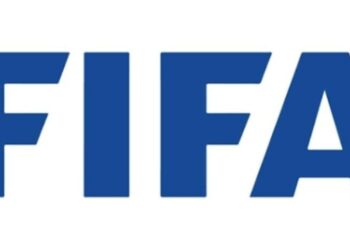Football is more than just a sport; it is a global phenomenon that unites millions of people across cultures, languages, and continents. Few football leagues have managed to capture the world’s attention quite like the English Premier League (EPL). Regarded as the most competitive and financially powerful domestic league, the EPL has revolutionized modern football, setting high standards for quality, entertainment, and commercialization.
The league’s history is a story of transformation, from humble beginnings in the 19th century, through decades of struggle and decline, to an era of immense global reach. The Premier League as we know it today did not emerge overnight; it was shaped by economic shifts, broadcasting innovations, managerial revolutions, and a constant influx of world-class talent.

When the league was officially formed in 1992, it broke away from the traditional structure of English football, bringing with it a wave of changes that would redefine the sport. Today, the Premier League is a billion-dollar industry, home to some of the most iconic clubs, legendary players, and fiercely passionate supporters.
But then, how did the Premier League come to being and what are the changes it has experienced?
Let’s get into it…
Origins and Formation of the English Premier League
The State of English Football Before 1992
Before the Premier League, English football’s top division was the Football League First Division, established in 1888. For over a century, the Football League was the heartbeat of English football, but by the late 1980s, it faced a crisis. English clubs, once dominant in Europe, had fallen behind their counterparts in Spain and Italy. Attendance at stadiums was declining, hooliganism had tarnished the league’s reputation, and financial instability threatened the survival of many clubs.
The most pressing issues were stadium conditions and safety concerns. The Hillsborough disaster in 1989, where 97 Liverpool fans tragically lost their lives due to overcrowding and poor crowd management, exposed the dire state of English football infrastructure. The Taylor Report, published in the wake of Hillsborough, recommended the introduction of all-seater stadiums, which would require massive financial investment from clubs.
Adding to the turmoil, English clubs were banned from European competitions for five years following the Heysel Stadium disaster in 1985, where a riot involving Liverpool fans led to the deaths of 39 Juventus supporters. This exclusion further hampered English football’s progress while leagues in Italy, Germany, and Spain capitalized on European exposure to grow financially.
Despite these challenges, English football was experiencing a revolution off the pitch. The growing influence of television broadcasting meant that football had the potential to generate enormous revenue. Clubs at the top of the First Division realized they were not maximizing their earnings and saw an opportunity to break away from the Football League, allowing them to negotiate their own broadcasting deals.
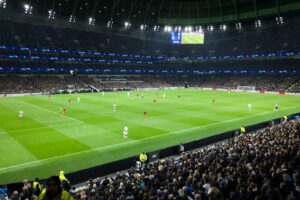
The Breakaway and Formation of the Premier League
By the early 1990s, the wealthiest clubs in England had grown dissatisfied with how television rights revenue was distributed among the 92 clubs in the Football League. Inspired by the success of the NFL and the NBA in the United States—where leagues had full control over commercial rights—leading clubs sought greater financial independence.
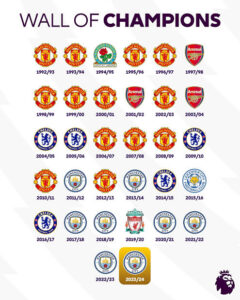
In 1991, the “Big Five” clubs (Manchester United, Liverpool, Arsenal, Tottenham Hotspur, and Everton) began secret discussions to create a new league. These talks, heavily influenced by media executives, led to a proposal for a breakaway competition that would operate as a separate entity from the Football League.
On February 20, 1992, the 22 clubs in the First Division officially resigned from the Football League and founded the FA Premier League. This decision meant that from the 1992-93 season onward, the Premier League would operate independently, with full control over television rights and sponsorship deals.
The newly formed league secured an exclusive broadcasting contract with Sky Sports, a deal worth £304 million over five years, which was revolutionary at the time. This agreement marked the beginning of football’s transition from a sport to a major entertainment industry.
The first-ever English Premier League season kicked off on August 15, 1992, with 22 teams competing. This was a turning point in English football history, laying the foundation for the league’s future dominance.

1990s: The Early Years and Establishing Dominance
The English Premier League’s early years were dominated by Manchester United, under the legendary management of Sir Alex Ferguson. The club won eight league titles in the first 11 seasons, setting the standard for dominance. Players like Eric Cantona, Ryan Giggs, and Roy Keane became household names, and United’s success helped cement the league’s reputation.
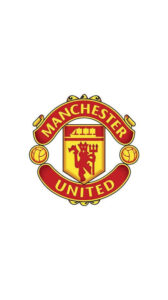
Television coverage played a massive role in growing the league’s global appeal. Sky Sports introduced innovations such as Monday Night Football, enhanced graphics, and in-depth analysis, transforming football broadcasting into an immersive experience.
The mid-90s also saw the arrival of foreign players who reshaped English football. Dennis Bergkamp (Netherlands) and Gianfranco Zola (Italy) brought technical brilliance, while the influx of international managers like Arsène Wenger (France) introduced new tactical approaches.
To align with FIFA regulations and ease fixture congestion, the number of teams was reduced from 22 to 20 in 1995.
2000s: The “Big Four” Era and Foreign Investments
By the early 2000s, a group of elite clubs emerged, known as the “Big Four”:
1. Manchester United – Continued their dominance under Sir Alex Ferguson.

2. Arsenal – Became the first and only team to complete a Premier League season unbeaten (2003-04 “Invincibles”).
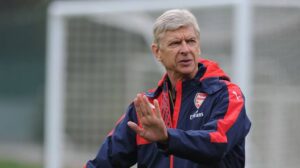
3. Chelsea – Became a major force after Roman Abramovich bought the club in 2003, investing heavily in players and facilities.
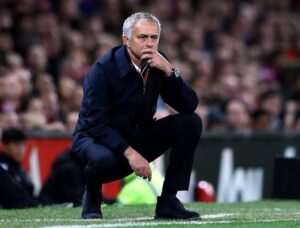
4. Liverpool – Though inconsistent in the league, they won the 2005 UEFA Champions League in legendary fashion.

The 2000s also saw the explosion of broadcasting revenue. In 2007, the Premier League signed a £1.7 billion domestic TV rights deal, the largest in football history at the time. This financial strength helped English clubs attract the world’s best talents, increasing the league’s competitiveness.
2010s: The Rise of the “Big Six” and Tactical Evolution
By the 2010s, Manchester City (bought by Abu Dhabi’s Sheikh Mansour in 2008) and Tottenham Hotspur had emerged as serious challengers, forming the modern “Big Six”.
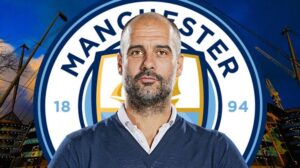
The decade also witnessed tactical revolutions, particularly with the arrival of Pep Guardiola at Manchester City (2016) and Jürgen Klopp at Liverpool (2015). Guardiola’s possession-based football and Klopp’s high-pressing system redefined the way teams played.
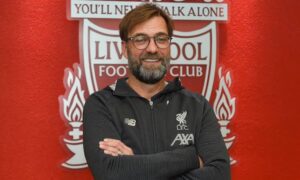
Leicester City’s historic 2015-16 title win was another defining moment, proving that financial power wasn’t the only path to success. Their triumph at 5,000-1 odds remains one of the greatest sporting shocks in history.
The Premier League’s Financial Revolution
One of the most defining aspects of the Premier League’s evolution has been its unprecedented financial growth. Since its formation, the league has transformed into the most lucrative football competition in the world, attracting elite players, managers, and investors.
Television broadcasting has been the primary driver of the English Premier League’s financial dominance. In its inaugural season (1992-93), the league secured a £304 million TV rights deal with Sky Sports. This was a groundbreaking moment in sports broadcasting, as it introduced extensive live coverage, in-depth analysis, and premium packaging, making football a year-round entertainment product.
By the 2000s, competition for broadcasting rights intensified. The introduction of multiple broadcasters, such as BT Sport, saw TV rights revenues skyrocket. By 2016, domestic and international rights were sold for a staggering £8.3 billion for a three-year cycle. As of the 2022-2025 cycle, the Premier League’s TV rights are worth over £10 billion, with deals spanning across 188 countries.
Major global markets such as the United States, China, and the Middle East now contribute significantly to the league’s commercial success, with broadcasters like NBC, beIN Sports, and DAZN paying billions for exclusive rights. This worldwide reach has made the English Premier League the most-watched domestic sports league on the planet.
Alongside TV rights, sponsorship deals have also fueled the Premier League’s financial power. The league itself has had multiple title sponsors over the years:
Carling (1993-2001)
Barclaycard (2001-2004)
Barclays (2004-2016)
From 2016 onward, the Premier League decided to operate without a title sponsor, adopting a “clean” brand strategy similar to the NBA and NFL. This allowed clubs to negotiate their own lucrative sponsorship deals.

Clubs have also capitalized on commercial opportunities through kit sponsorships and merchandising. The likes of Manchester United, Liverpool, and Chelsea have signed £50-100 million per year kit deals with brands such as Adidas, Nike, and Puma. Meanwhile, club merchandise, including replica kits, scarves, and other collectibles, generates hundreds of millions in revenue annually.
Foreign Investments and the Changing Ownership Model
One of the most significant shifts in the English Premier League’s history has been the rise of foreign ownership. In the league’s early years, English clubs were primarily owned by local businessmen. However, as football’s profitability grew, wealthy investors from around the world saw an opportunity to acquire clubs and inject massive financial backing.
Key foreign takeovers include:
Chelsea (2003) – Purchased by Russian billionaire Roman Abramovich, whose wealth transformed Chelsea into a title-winning powerhouse.

Manchester City (2008) – Acquired by the Abu Dhabi United Group, bringing unprecedented financial muscle, leading to multiple league titles.
Liverpool (2010) – Bought by American firm Fenway Sports Group, stabilizing the club and leading to Champions League and Premier League success.
Manchester United (2005) – The Glazer family took control, leading to commercial success but controversy over debt accumulation.
Newcastle United (2021) – Acquired by Saudi Arabia’s Public Investment Fund (PIF), making it one of the wealthiest clubs in the world.

These takeovers have intensified competition, with clubs spending hundreds of millions on player transfers, wages, and infrastructure to gain an edge. However, it has also raised concerns about financial fairness, as some clubs benefit from state-backed wealth while others struggle to compete.
Legendary Players Who Shaped the English Premier League
Thierry Henry (Arsenal) – A dazzling forward who dominated the early 2000s, winning multiple Golden Boots and leading Arsenal’s unbeaten “Invincibles” season.
Cristiano Ronaldo (Manchester United) – Burst onto the scene in the mid-2000s, becoming one of the greatest players in history before moving to Real Madrid.
Wayne Rooney (Manchester United) – The club’s all-time top scorer, known for his versatility, aggression, and spectacular goals.
Didier Drogba (Chelsea) – A big-game player who led Chelsea to multiple Premier League and Champions League triumphs.
Sergio Agüero (Manchester City) – Manchester City’s all-time top scorer, remembered for his dramatic title-winning goal in 2012, which has now been dubbed the Aguero Moment.
Legendary Managers
Sir Alex Ferguson (Manchester United) – The most successful manager in English Premier League history, winning 13 league titles and building multiple dominant squads.
Arsène Wenger (Arsenal) – Revolutionized English football with his focus on sports science, diet, and attacking football, leading Arsenal to three titles.
José Mourinho (Chelsea, Manchester United, Tottenham) – Introduced a winning mentality at Chelsea, delivering three titles across two spells, as well as being known for a defensive approach called “Parking the Bus.”
Pep Guardiola (Manchester City) – Redefined football with his possession-based tactics, leading City to multiple titles, including a record-breaking 100-point season.
Jürgen Klopp (Liverpool) – Revived Liverpool’s fortunes, winning the club’s first English Premier League title in 30 years and a Champions League crown.
Legal Controversies and Financial Regulations
In recent years, the Premier League has faced growing scrutiny over financial regulations. In 2025, a legal tribunal ruled that the league’s Associated Party Transaction (APT) rules (a set of rules designed to prevent clubs from artificially inflating sponsorship deals) were “void and unenforceable.” Manchester City successfully challenged these rules, arguing they were unfairly restrictive.

This ruling could have significant consequences, as it may allow clubs with wealthy owners, such as City and Newcastle, to secure even larger commercial deals, further widening the financial gap between clubs.
Introduction of Semi-Automated Offside Technology
To improve decision-making, the English Premier League introduced semi-automated offside technology in 2024, following its successful implementation in the Champions League and FIFA World Cup. This system uses tracking cameras to instantly detect offside positions, reducing VAR delays and controversy.
Fixture Congestion and Player Welfare Issues
With the rise of global tournaments like the expanded FIFA Club World Cup (32 teams from 2025) and the UEFA Champions League’s new format, fixture congestion has become a growing concern. In February 2025, Manchester City’s request for a delayed Premier League start (due to their involvement in the Club World Cup) was rejected, highlighting tensions between club and league priorities.
The Future of the Premier League
Looking ahead, the Premier League faces multiple challenges and opportunities:
Sustainability Measures – With clubs spending record amounts, stricter financial regulations may be introduced to prevent excessive losses.
Expansion of Global Markets – The league is continuously growing its fanbase in Asia, Africa, and the Americas, increasing broadcasting revenues.
Potential Super League Threats – While the European Super League was rejected in 2021, discussions around a breakaway competition persist.
Technological Advancements – AI-driven match analysis, virtual reality experiences for fans, and improved VAR technology are expected to play bigger roles in the coming years.
Final Thoughts: A Legacy of Excellence and a Future of Endless Possibilities
From its humble beginnings in 1992 to becoming a footballing powerhouse, the English Premier League has undergone extraordinary transformation. It has revolutionized broadcasting, commercialized football to unprecedented levels, and provided some of the most dramatic moments in sporting history.
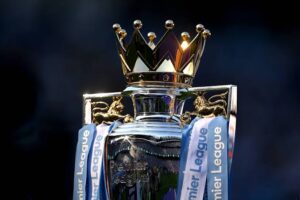
Despite ongoing challenges related to financial fairness, technology, and fixture congestion, the Premier League remains the pinnacle of club football. With its unmatched competitiveness, global reach, and financial strength, the league looks set to define the future of football for generations to come.
Since its formation in 1992, the English Premier League has evolved into the most prestigious and financially powerful football competition in the world. Its impact extends beyond the confines of the pitch, influencing footballing culture, broadcasting, commercial revenue, and even the geopolitical landscape of sports investment. What started as an ambitious breakaway from the Football League has become a multi-billion-pound global phenomenon, watched by billions of fans across 188 countries.
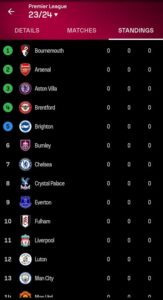
Looking ahead, the Premier League’s greatest challenge will be maintaining its delicate balance, how it continues to push boundaries while preserving the competitive spirit that has made it the world’s most exciting domestic league. Financial sustainability, fair play regulations, and technological advancements will be key factors in shaping its future. Moreover, the ongoing battle between traditional football governance and the lure of alternative competitions, such as the European Super League proposals, will test the league’s stability in the coming decades.
Yet, despite all uncertainties, one fact remains clear: the English Premier League is more than just a football league—it is a symbol of excellence, a cultural institution, and a global powerhouse. Whether through its dramatic title races, last-minute heroics, or unforgettable rivalries, the league continues to deliver unmatched entertainment to football fans worldwide.
As the Premier League marches into the future, one can only imagine what new milestones will be reached, what legends will be created, and what history will be written. But one thing is certain; the Premier League’s legacy as the greatest football league in the world is firmly cemented, and its influence will endure for generations to come.


















